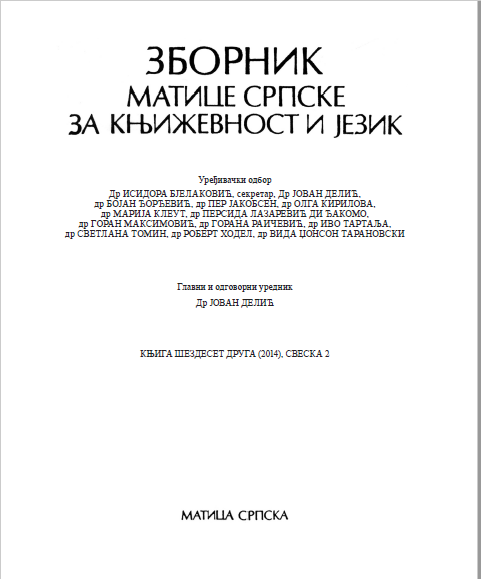О АРХАИЗМИМА У САВРЕМЕНИМ СРПСКИМ РЕЧНИЦИМА
ON ARCHAISMS IN CONTEMPORARY SERBIAN DICTIONARIES
Author(s): Rada StijovićSubject(s): Theoretical Linguistics, Lexis, South Slavic Languages, Philology
Published by: Матица српска
Keywords: Archaisms; Serbian dictionary; Lexis;
Summary/Abstract: The dictionaries of the contemporary standard Serbian language contain lexis which is marked as archaic, obsolete, old standard, historical, Church Slavonic, etc. The task of this paper is to establish what individual lexicographical editions classify under these features, to what extent each of the dictionaries contains lexis thus marked, and how justified that choice is. The research has shown that our existing monolingual dictionaries seldom make a clear distinction between what is no longer in use (e.g. ćorda “sword”, breg “coast”, crnilo “ink”) and what has a narrow field of use, which is the characteristic of only some fields of language or styles (e.g. celiv, celivati, i.e. celov, celovati, thenpojac, hristoljubiv, tihovati etc.). There is also no difference between the lexis which has the phonetic features of Old Church Slavonic but is still part of the contemporary language (e.g. mošti, preosveštenost, Uspenije, bdenije, žitije) and such lexis which is no longer in use (e.g. besmrtije, nakazanije). The newer lexicographical publications often take lexemes from older dictionaries of the contemporary language although some of them (entirely or only in some meanings) have in the meantime become obsolete (e.g. the meanings of lexemes samrtnik ‘dying man’ and smrtnik ‘mortal’ have drifted apart, so the Church Slavonic word has been used to mean “the one who is dying, who is about to die”, while the folk work has been used to mean “the one whose nature is to die, who can die”). The final conclusion is that marking archaic lexis of any kind (zast. ‘obsolete’, csl. ‘Church Slavonic’, stknj. ‘old standard’ etc.) is justified in the Dictionary of the Serbian Academy of Sciences and Arts, which is the most detailed dictionary not just in terms of the number of entries but with respect to other data, whereas the dictionaries that cover a shorter period should not contain such obsolete lexis unless it is understood in the normative sense as a feature of style. Lexicographers should also pay attention to those items that are a characteristic only of some language fields or certain styles so that they are not omitted from the dictionaries.
Journal: Зборник Матице српске за књижевност и језик
- Issue Year: 62/2014
- Issue No: 2
- Page Range: 405-412
- Page Count: 8
- Language: Serbian

